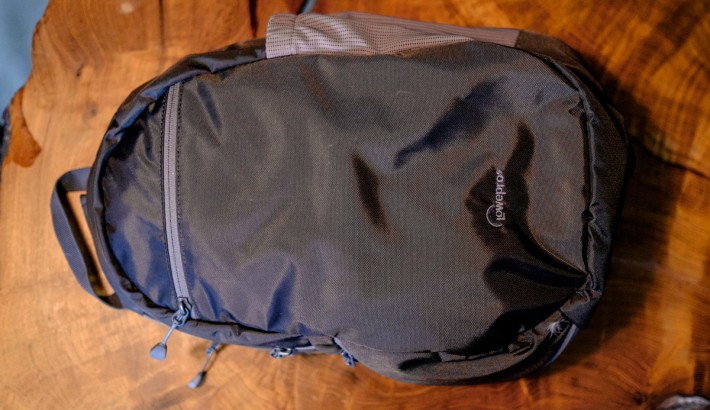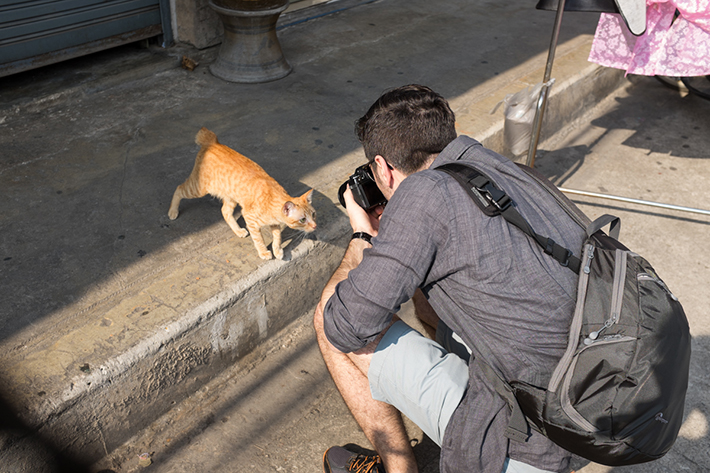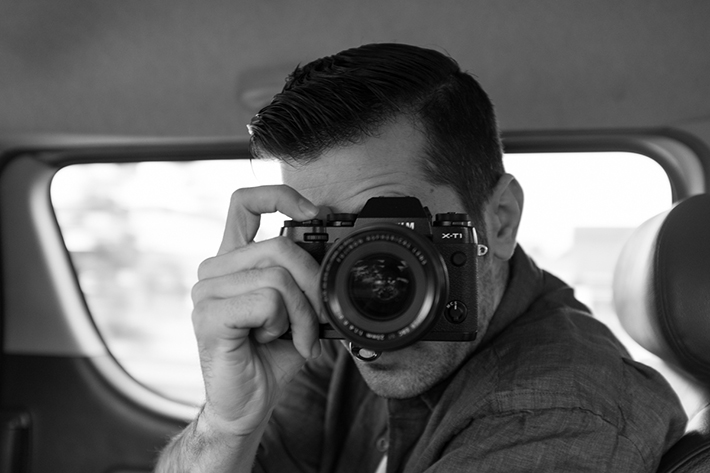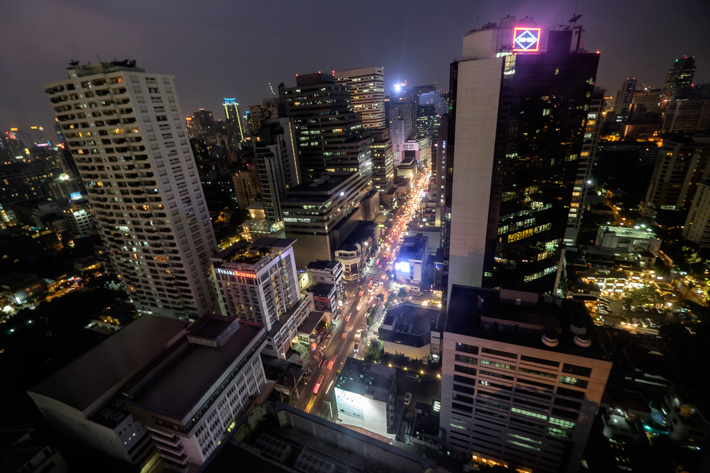About a month ago, I traveled to Southeast Asia to put THE ULTIMATE, PORTABLE TRAVEL PACK (shortened name, rights still reserved) to the test. Several people asked for a follow-up. How did this tiny, travel kit work out? …Did I even get any pictures I liked? …And most importantly, did I lose everything gambling on a high-stakes Muay Thai tournament, only escaping with my life and seven fingers? Read on to find out.
We begin with the first question. “How did this tiny travel kit work out?” The short answer is… “well.” The longer answer involves a more careful dissection of what works, what didn’t and why peanut and sesame brittle may in fact change your life.
The Bags


The travel kit starts and ends with the backpack itself. In this capacity, the Kelty Redwing 50L worked beautifully. Truth be told, after packing clothes and toiletries, the bag was full… at capacity full. That being said, I didn’t encounter a single problem fitting it into international, overhead bins. In fact, two bags overlapping, took up much less space than two conventional roller carry-ons, and nothing broke.
Additionally, I carried this bag through Thailand and Cambodia during some of the hottest parts of the year. I did not get as sweaty under the backpack as I thought I might. The dynamic airflow venting system on your back actually works pretty well.

The smaller daypack was the Lowepro Streamline Sling Bag. Obviously, this pack would not work for you if you were carrying a DSLR. It’s small - just barely big enough the Fuji X-T1 and lenses that I brought, but the camera spent the majority of the time on the Blackrapid Metro Sling Camera Strap. Which was for the best, because the dials would change whenever I brought the camera out of the bag. Inside the bag were the ND filters and their case, lenses (a Fuji 23mm, 56mm, 55-200mm and Fuji’s new 10-24mm), cards and batteries. Here is that setup being used to take a picture of a cat.
 We don’t have these in New York.
We don’t have these in New York.
The Camera

On to the camera. Our own Dave Geffin has done a bang up job reviewing the Fuji X-T1 (The Camera Your DSLR Will Love to Hate), and I’m really only going to agree with him. Dave and I shared many conversations about this camera early on, and I think some of my enthusiasm finally rubbed off. For me, it really is the perfect travel camera. Of course it’s not perfect overall, but it’s the best and biggest step in the right direction that I’ve had the pleasure to shoot with. Manual focusing is intuitive and, dare I say, a joy. As soon as you touch the focus ring, the screen zooms to 100%, and using phase detection, you’ll get a sharp image every time. Autofocus is fast and mostly reliable. Burst shooting is like a quiet machine gun. The resolution of the EVF is nothing short of dark magic. I can’t wait until this camera gets slapped with a sensor bigger than 16mpx – but only because I like large prints, and I’m a bit of a size queen in that regard. Otherwise, I’ve gotten tones and colors out this sensor that I’ve NEVER gotten from my Canon equipment. It’s a little unquantifiable, but the whole photographic experience just feels richer. It’s like dating out of your league. Or owning a Leica.
 I definitely don't look stupid here.
I definitely don't look stupid here.
But there are a couple of quirks. First, I don’t care about the video option. I wouldn’t use this camera for video. My beef is with the functionality regarding the exposure preview in manual mode. I usually love this feature, BUT when using any off-camera lighting, it is absolutely useless. FUJI? ARE YOU LISTENING, FUJI? Make a note of this: to turn off exposure preview mode (which you must do EVERY TIME you want to shoot manually with off-camera flash), the user is forced to go deep into the menu system to disable it. Is it too much to ask for the ability to be able to assign this option to one of the 4,000 customizable buttons on this thing? Better yet, allow the user to create custom setting for shooting with lights that disables exposure preview AND enables a flash white balance setting. If you can get on that, that would be terrific. Moving on.
The 10-24mm. Holy. Crap. This thing is sharp. The built in optical image stabilization helps with the fact that this is an f/4 lens.
 This image was shot handheld, with a half-second exposure through the hotel room window.
This image was shot handheld, with a half-second exposure through the hotel room window.
This lens was also on when I took probably my favorite shot of the trip.

Another great feature of this lens is a switch that allows for a disabling of exposure preview mode…the aforementioned mode that is a pain in the ass to disable. I’m thrilled that this lens has one, but the portrait lens (the 56mm) does not. Of course, neither does the next lens, the 23mm.
This lens gives approximately a 35mm focal length on a 35mm sensor. That makes this my normal walk around lens. This was the first lens I purchased for this camera. It’s great in everything it sets out to do.
 Note: outside of the United States, you can chase people down the street with a camera and no one seems bothered. Also, taking pictures of children has much less of a stigma, and smiling usually gets you a smile in return.
Note: outside of the United States, you can chase people down the street with a camera and no one seems bothered. Also, taking pictures of children has much less of a stigma, and smiling usually gets you a smile in return.
There was also the 56mm (85mm equivalent on a 35mm sensor) - a truly great lens. Incredibly sharp, great contrast. Fast focusing.

The one lens I really never used was the 55-200mm. I don’t shoot on a longer lens often, but I wanted to have one just in case. I put it on the camera once, got bored with it, and went back to a steady rotation of the others in my bag.
Accessories
During this trip, I never went through more than two full batteries in a day, with each battery getting about 300-350 shots. I was never able to use my surge protector and converter, as all the outlets I encountered were globally universal.
The Pelican case for the SD cards worked well, but I (thankfully) never encountered a wet enough condition to really test it.

My initial plan for backing up was a daily or bi-daily use of hotel computers with a card reader and the hard drive I brought. That didn’t work out as well as I had hoped on account of usually being too tired to go downstairs. I only backed up twice during the trip. If I did this again, I would bring a hard drive with a built-in card reader for easy transfers. I suppose one could also bring a laptop, but I was fine living without for a couple of weeks. All images that I uploaded from the trip were processed in-camera and sent via Wi-Fi from my camera to my phone. A little additional processing was done on the phone.
ND filters. I had two, three-stop ND filters. I used these with the flash, battery and umbrella on one occasion. In a small village, a few hours from Bangkok, I set up for portraits of kids at a local school. Using both filters, I overpowered the sun and used the umbrella to create soft light and shot at f/2.
 (Side note: the battery pack gave me problems at most x-ray machines, even when I took it out of the bag in advance. Also, in many parts of the world, you must remove your camera and lenses to be scanned separately, so don’t pack them in the bottom of your bag.)
(Side note: the battery pack gave me problems at most x-ray machines, even when I took it out of the bag in advance. Also, in many parts of the world, you must remove your camera and lenses to be scanned separately, so don’t pack them in the bottom of your bag.)
(Additional side note: It was in this town that I had peanut and sesame brittle for the first time. It changed my life. If you find it, buy it in bulk. You're welcome.)
I never once used the Gorillapod or the DiCaPac Waterproof Case. I was specifically disappointed for the latter. The neck pillow was great. It was comfortable, packed small and stayed in place.
 Here is the pillow, backpack and trail shoes in action in China.
Here is the pillow, backpack and trail shoes in action in China.
Conclusion
Although the final weigh-in for the gear came in around 18-20 lbs., the final weight coming home (with souvenirs) was closer to 50 lbs. That’s no small sack of potatoes, but the Kelty handled the load wonderfully and made for much less of a burden than it could have been.
All in all, it was a truly great experience. The dust still hasn’t settled, and once it does, I’m sure I’ll be ready to move on to the next adventure. Also, all my fingers are still attached in case you were still wondering.
Now….how do you feel about Nepal?
You can view more images from the trip on my Instagram here.







That second to last image is amazing!!
Thank you!
Were you actually able to fit the Redwing 50-Liter Backpack on your flight as a carry on? It seems a little big. If you were able to, what airline? Thanks
We actually traveled with two and didn't have a single problem putting them in international, overhead bins. They took up less space than traditional roller carry-ons. We flew Air China, but I've not heard of anyone having issues with this bag.
man reading this has made me want to get back out on the road and travel again so bad. Nice write up Chris and some great shots too!
Thanks Dave! I'm just trying to catch up to you.
Protip for China (and most Asian countries). Non-violent petty theft is common. If you are going to take a nap in a public place (airport, train station, etc) sleep with your arms through your backpack straps and ideally, cuddle with your bag. Far more difficult for it to walk off if you do.
Thanks. I don't I would ever nap in public.
Nice article, but I was wondering if you could clarify 2 things for me please, you mention that you have to go deep into the menu to turn exposure compensation off but isn't that done by the dial on top of the camera.
Also a bit further down under the 10-24 lens bit you mention exposure preview mode and been able to turn it off on the lens was wondering what this was as I have never heard of the expression exposure preview mode before.
Thanks in advance
This was my mistake in the text. What I meant was "exposure preview" instead of exposure compensation. In mirrorless cameras, the viewfinder displays the image as it will be in the actual photo (exposure preview). When this is on (while shooting with strobes), it makes the image too dark to see anything. Of the lenses I brought, only the 10-24mm had a switch to disable it.
Ok think I get what it does, because if you are using strobes with an aperture of f11 but realistically you have an ambient exposure at f5.6 it makes the screen dark but by using the switch to turn exposure preview off you can have the aperture set at f11 but the viewfinder screen is still showing the image at the brighter level so you can see clearly.
You got it.
That's great. Many thanks for your time replying to my responses